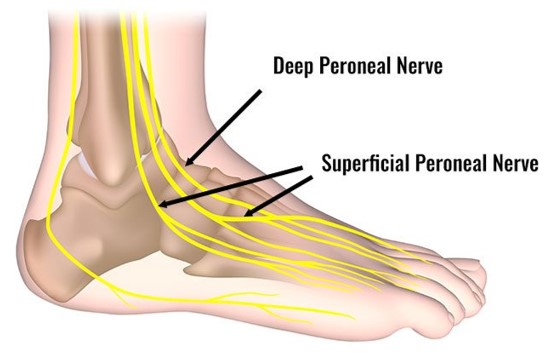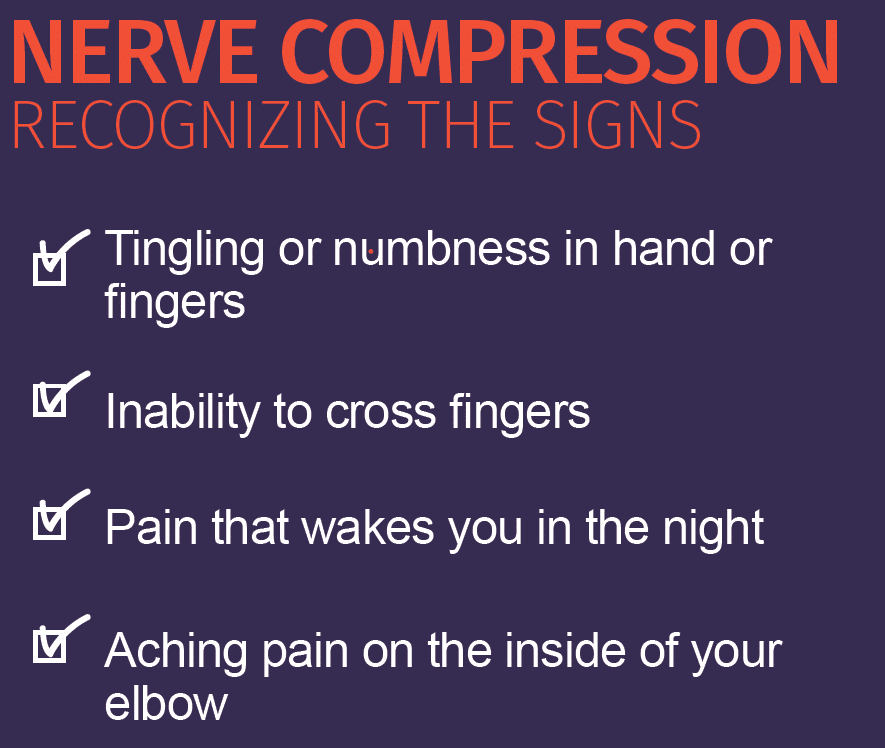Superficial Peroneal Nerve

Slide

Slide
Superficial Peroneal Nerve
Superficial Peroneal Nerve
The superficial peroneal nerve passes under ligaments and the emerges from a tunnel in the lower one third of the leg. It is a branch of the common peroneal nerve, which comes from the sciatic nerve. This nerve runs down the side of the lower leg and controls muscles like the peroneus longus and peroneus brevis, which help turn the foot outward and stabilize the ankle. It also provides sensation to the top of the foot and most of the lower leg’s outer skin. Injuries to this nerve, such as from sprains or direct trauma, can cause numbness, tingling, or weakness in the affected areas.
Read below to learn more about the causes of pain, potential treatments, and how to find care for the superficial peroneal nerve.
Read below to learn more about the causes of pain, potential treatments, and how to find care for the superficial peroneal nerve.
Causes of Pain – Superficial Peroneal Nerve
Trauma
− Direct injury to the nerve such as stretching or a direct blow to the nerve.
− Prior fracture or surgery in area could result in direct damage to the nerve.
− There is a strong correlation with ankle sprains and damage to the Superficial Peroneal Nerve.
Entrapment
− The Superficial Peroneal Nerve passes under several ligaments and tunnels in the lower third of the leg. These locations can compress the nerve causing entrapment.
Biomechanics
− An individual’s biomechanics can cause foot function that could causes damage or chronic ankle instability which also can cause pain.
Traction
− Chronic prolonged stretching of superficial fibular nerve or extreme plantar flexion of ankle as in dancing, soccer, diving, gymnastics, prayer positions.
− Direct injury to the nerve such as stretching or a direct blow to the nerve.
− Prior fracture or surgery in area could result in direct damage to the nerve.
− There is a strong correlation with ankle sprains and damage to the Superficial Peroneal Nerve.
Entrapment
− The Superficial Peroneal Nerve passes under several ligaments and tunnels in the lower third of the leg. These locations can compress the nerve causing entrapment.
Biomechanics
− An individual’s biomechanics can cause foot function that could causes damage or chronic ankle instability which also can cause pain.
Traction
− Chronic prolonged stretching of superficial fibular nerve or extreme plantar flexion of ankle as in dancing, soccer, diving, gymnastics, prayer positions.
Compression
− Shoe pressure on top of foot.
− Boot pressure at ankle- i.e. work boots/ski boots/military boots.
− Pressure from bone spurs and accessory bones at midfoot and ankle.

Treatment of Superficial Peroneal Nerve
Non-surgical Treatments
There are several non-surgical treatments that could alleviate the discomfort caused by the Superficial Peroneal Nerve, including:
- Shoe modifications
- Lacing techniques
- Ice
- Anti-inflammatory medications
- Physical therapy
- Cortisone Injections
- Orthotics
Surgical Treatments
Foot/ankle
−Freeing of nerve at midfoot and removal of contributing factors (bone spurs/accessory bones)
Lower Leg
−Surgical release of thickened fascial tissues putting pressure on the nerve at the lower leg
Sign up to be notified when new educational content is available!
Finding Care
Dr. Kent DiNucci describes how to find care for a nerve problem and how to prepare for visiting your doctor.
If you think you might have a nerve injury, find care as quickly as possible. The quicker patients can consult with a doctor to treat injuries or nerve problems, the better outcomes they have.
Not sure how to find care, or questions you should ask when visiting a doctor? Listen to Dr. Kent DiNucci explain how to find care and questions to ask your doctor when visiting for the first time.
Not sure how to find care, or questions you should ask when visiting a doctor? Listen to Dr. Kent DiNucci explain how to find care and questions to ask your doctor when visiting for the first time.
If you are suffering from compression symptoms, be sure to consult a nerve specialist
PAGE CONTRIBUTORS
PAGE CONTRIBUTORS

Shari Moore, DPM
Podiatrist
Allina Health
Minnesota
Allina Health
Minnesota

Kent DiNucci, DPM
Podiatrist
Ankle and Foot Clinic
Nebraska

Kevin Powers, DPM
Podiatrist
The Center for Lower Extremity Nerve Surgery
Indiana
The content on or accessible through globalnervefoundation.org is for informational purposes only. This information is not a substitute for professional advice or expert medical services from a qualified healthcare provider

